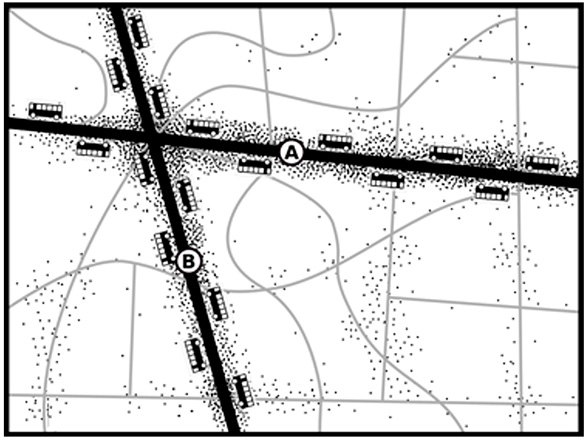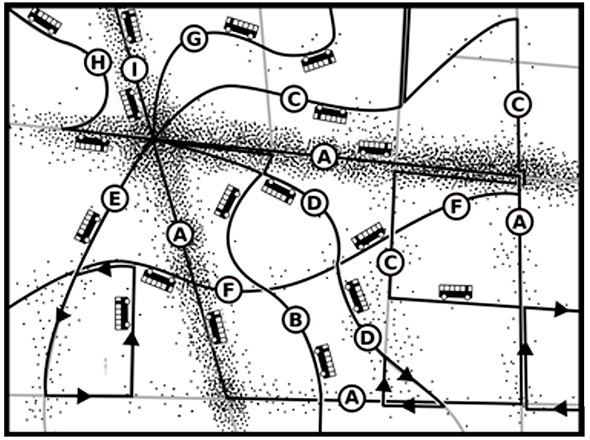Transit needs across the City of Albuquerque are evolving. To meet those needs, ABQ RIDE is undertaking a comprehensive review of existing transit services and considering ways to enhance its bus transit network and service options.
Study recommendations will aim to best meet the needs of Albuquerque transit users and to make the most efficient use of existing resources.
The ABQ RIDE Forward Network Plan is entering its second phase in which members of the public are asked to provide feedback on where, on a range of possible network designs, ABQ RIDE should design its bus route network, using two network concepts to illustrate that range of possibilities: a high ridership concept and a high coverage concept.
See the Reports/Documents tab for a range of interim products, including an Existing Conditions Report, summary of Phase I of public and stakeholder outreach, and a Design Concepts Report that provides an overview of the range of possible network options for the City of Albuquerque.
ABQ RIDE Forward will include:
- Consultation of residents, workers, transit riders and advocates about how the City should make choices and prioritize service in the future.
- Planning for potential future growth of the Albuquerque transit network.
- Guidance for the City and its partners about how development, street management and growth can be shaped so that providing transit is less costly and more successful.
Understanding Transit Choices
A key question is how to balance running routes that are ridden by the greatest number of people (ridership) vs running routes that cover the greatest geographic area (coverage).
The images below depict two imaginary bus networks that show the extremes of this choice. The dots in these images are residents and jobs. Should buses be concentrated into frequent routes, where the most people are? Or is it better to spread buses across the whole city, but the buses don’t come often and few people ride?
Maximum Ridership

Maximum Coverage

In the maximum ridership scenario, all 18 buses are focused on the busiest areas. Waits for service are short but walks to service are longer for people in less populated areas. Frequency and ridership are high, but some places have no service.
In the maximum coverage scenario, the 18 buses are spread around so that there is a route on every street. Everyone lives near a stop, but every route is infrequent, so waits for service are long. Only a few people can bear to wait so long, so ridership is low.